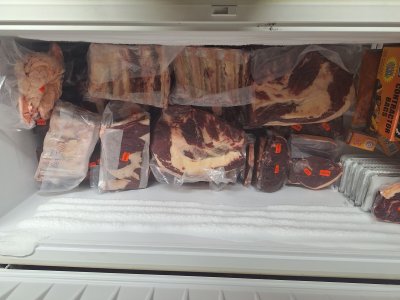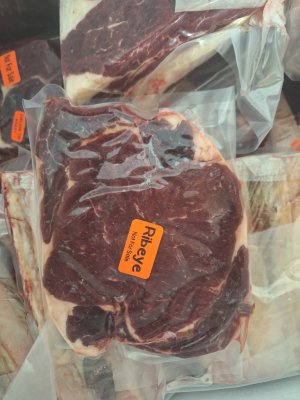Jeanne - Simme Valley
Well-known member
People are probably tired reading how I finish, but here goes.
First, I gave PB Simmental cattle, heavy muscled fast growing.
We only feed our fall born steers. About a month before weaning, we start putting small amount of whole shell corn in the calf shed for them. Wean about 6.5 to 7 months old. Immediately start them on 1% bw of WSC with a 32% protein to make a 14% ration. After 2 weeks, slowly increase corn til you are feeding 3% bw.
I finish mine at 12-13 months old. They will hang a 750# carcass and easily grade choice.
WSC is the cheapest and healthiest grain to push a steer to finish.
We have 2 kill dates this month. I will post a thread with the results.
First, I gave PB Simmental cattle, heavy muscled fast growing.
We only feed our fall born steers. About a month before weaning, we start putting small amount of whole shell corn in the calf shed for them. Wean about 6.5 to 7 months old. Immediately start them on 1% bw of WSC with a 32% protein to make a 14% ration. After 2 weeks, slowly increase corn til you are feeding 3% bw.
I finish mine at 12-13 months old. They will hang a 750# carcass and easily grade choice.
WSC is the cheapest and healthiest grain to push a steer to finish.
We have 2 kill dates this month. I will post a thread with the results.






